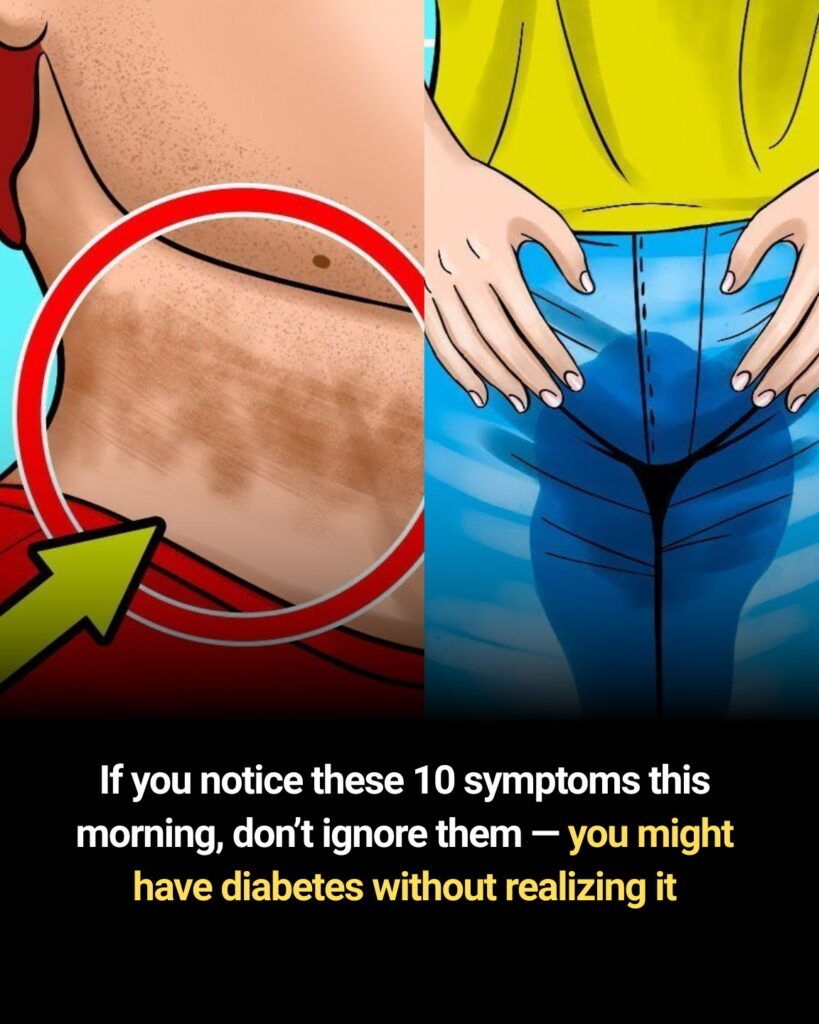
Prediabetes is defined as the onset of diabetes. In other words, it’s called a “pre-diabetes” state. It’s important for people with prediabetes to eat a healthy diet, exercise, and lose weight to prevent it from developing into diabetes. Precautions can also be taken by seeing an endocrinologist . So, how is prediabetes diagnosed, what are its symptoms, and what precautions should be taken? Here’s what you need to know…
What are the symptoms of latent diabetes?

1- Excessive thirst and frequent urination:
Are you urinating more than four to six times a day? Are you still thirsty despite drinking water regularly? While this change can be caused by normal body fluctuations and external factors, it’s a prominent symptom in all types of diabetes. High blood sugar forces your kidneys to produce more urine. This symptom applies to type 1, type 2, and prediabetes.
2- Unexplained weight loss:
When you urinate frequently and flush excess glucose from your body, you also burn calories. This can cause your body to consume fewer calories, leading to rapid weight loss. This symptom is more common in type 1.
3- Yeast, skin infections and bruises that do not heal:
Do you have a cut, infection, or bruise that’s taking forever to heal? Prolonged high blood sugar can slow your skin’s healing process, making you more susceptible to infections. Yeast infections can be common in both men and women. This symptom applies to both types 1 and 2.
4- Dry mouth or thirst:
Like most symptoms, this is associated with high blood sugar. High sugar levels cause thirst and increased urination, leading to unquenchable thirst. Both type 1 and type 2 share symptoms.
5- Increased appetite after eating:
If you still feel hungry despite eating, you may be diabetic. With diabetes, your body has extra glucose. Your cells can’t absorb it normally. Your body can’t burn the extra glucose as fuel, so it tries to excrete it in your urine instead. This causes your body to crave more fuel and send signals for you to eat again. However, the cycle can lead to weight loss or gain, depending on the individual. Severe hunger can occur after eating in both type 1 and type 2 diabetics. It’s also common in prediabetes, where it’s an early warning sign.
6- Vomiting, nausea or belly pain:
Pain is associated with the vegus nerve, and nerve damage is common in people with diabetes, especially if left untreated. Damage to the vegus nerve can slow digestion, causing pain. Nausea and vomiting may also occur. Both type 1 and type 2 diabetics can experience this, but it’s more common in the former.
7- Serious fatigue:
The exact cause of fatigue in people with diabetes is still being researched, but doctors and scientists agree that it is a present and presenting complaint. The symptoms mimic chronic fatigue syndrome, and many people with diabetes receive it as a secondary diagnosis.
8- Tremor sensation:
You may experience tremors when your blood sugar fluctuates. Be aware that this can happen suddenly or in small increments. Stabilizing and maintaining a healthy blood sugar level can alleviate this symptom, which affects both types.
9- Tingling:
Have you ever had unexplained tingling or numbness in your hands, legs, arms, or feet? Diabetic neuropathy may be a cause. Because nerve damage takes time, this diabetic symptom can take years to appear. However, if you’re undiagnosed and living
10- Blurred vision:
Blurred vision is an early symptom that many people overlook. Your first step is likely to see your eye doctor so they can test your vision. Your vision may have changed enough that you’ve overlooked the diabetic symptom. However, if left untreated, your blurry vision can develop into diabetic retinopathy, which can lead to blindness. If you experience sudden onset of blurry vision, schedule two appointments with your eye doctor and your general practitioner.
How is Hidden Diabetes Diagnosed?
If your fasting blood sugar is between 100 and 126 mg/dl, you may be diagnosed with prediabetes . However, sometimes fasting blood sugar levels are normal (below 100 mg/dl), but a second-hour blood sugar reading of 140-200 mg/dl during the OGTT ( Sugar Tolerance Test ) also indicates prediabetes. Recent studies indicate that a first-hour blood sugar reading of 156 mg/dl during the OGTT should be considered prediabetes.
What to Do If There Is Hidden Sugar?
Individuals with prediabetes, those at risk of developing diabetes, or those with a family history of diabetes should first consult an endocrinologist. The following precautions can be taken beforehand:
- Healthy eating is essential.
- Carbohydrate intake should be reduced
- Useful oils (liquid oil such as olive oil) should be consumed.
- Consumption of vegetables and fruits should be increased
- Excess weight should be lost,
- Regular exercise should be done
- A stressful life should be avoided
- Regular sleep habits should be acquired
- Alcohol consumption should be stopped
- Drinking green tea etc. is among the things that should be done.